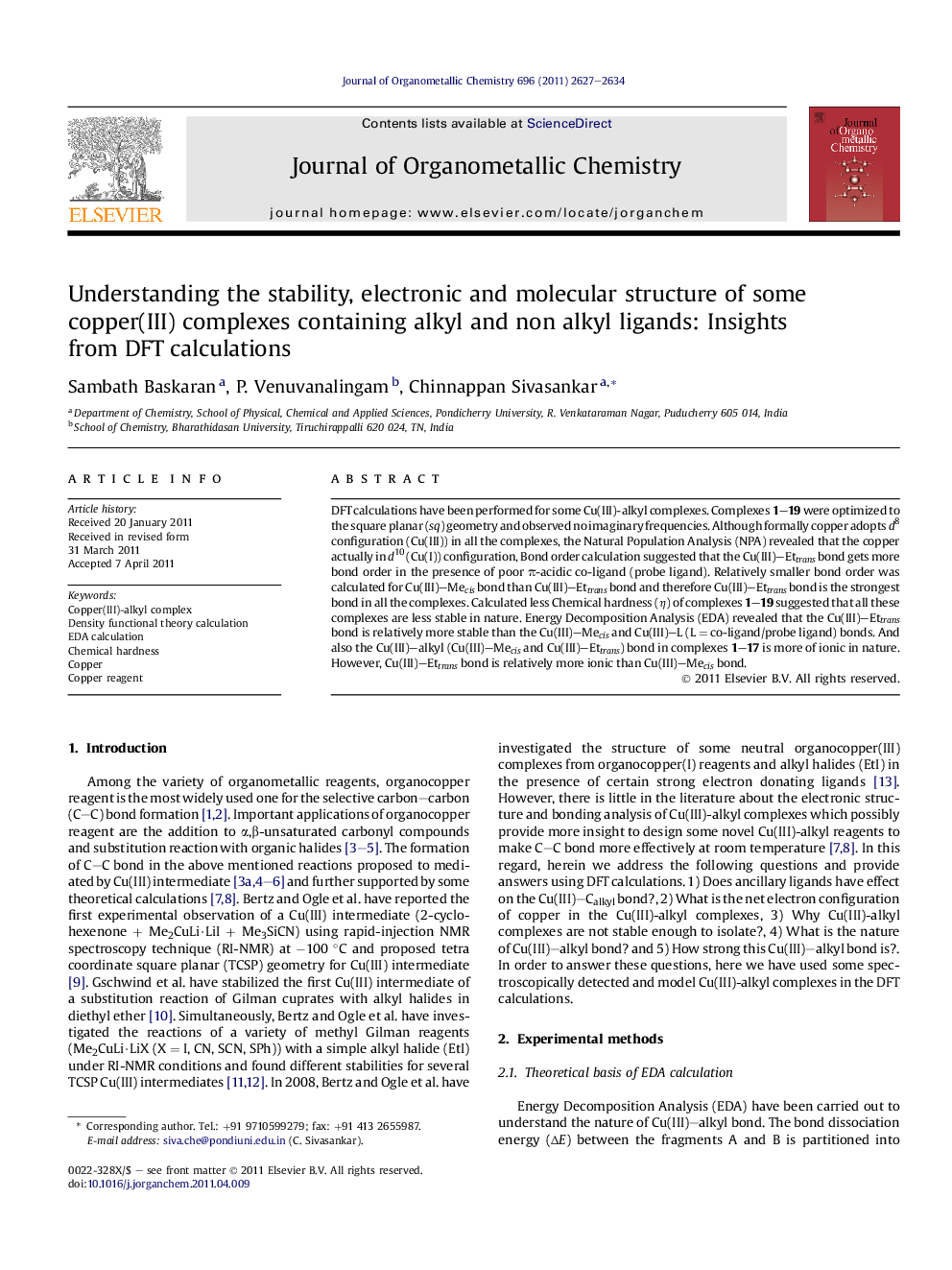| Article ID | Journal | Published Year | Pages | File Type |
|---|---|---|---|---|
| 1325342 | Journal of Organometallic Chemistry | 2011 | 8 Pages |
DFT calculations have been performed for some Cu(III)-alkyl complexes. Complexes 1–19 were optimized to the square planar (sq) geometry and observed no imaginary frequencies. Although formally copper adopts d8 configuration (Cu(III)) in all the complexes, the Natural Population Analysis (NPA) revealed that the copper actually in d10 (Cu(I)) configuration, Bond order calculation suggested that the Cu(III)–Ettrans bond gets more bond order in the presence of poor π-acidic co-ligand (probe ligand). Relatively smaller bond order was calculated for Cu(III)–Mecis bond than Cu(III)–Ettrans bond and therefore Cu(III)–Ettrans bond is the strongest bond in all the complexes. Calculated less Chemical hardness (η) of complexes 1–19 suggested that all these complexes are less stable in nature. Energy Decomposition Analysis (EDA) revealed that the Cu(III)–Ettrans bond is relatively more stable than the Cu(III)–Mecis and Cu(III)–L (L = co-ligand/probe ligand) bonds. And also the Cu(III)–alkyl (Cu(III)–Mecis and Cu(III)–Ettrans) bond in complexes 1–17 is more of ionic in nature. However, Cu(III)–Ettrans bond is relatively more ionic than Cu(III)–Mecis bond.
Graphical abstractElectronic and molecular structure analysis have been carried out for Cu(III)-alkyl complexes with different ancillary ligands. DFT calculation predicts a square planar (sq) geometry around the central metal ion for all Cu(III)-alkyl complexes. EDA calculation reveals that the Cu(III)–alkyl bond is more of ionic in nature.Figure optionsDownload full-size imageDownload as PowerPoint slideHighlights► The effects of ancillary ligands on Cu(III)–R bond have been studied. ► Explained the reason for why Cu3+-R complexes are not stable enough to isolate. ► The bonding nature of Cu(III)–alkyl bond is explained by EDA. ► Explained the strength of Cu(III)–alkyl bond using bond order calculation. ► Understood the e− configuration of Cu in the Cu3+-R complexes by NBO analysis.
